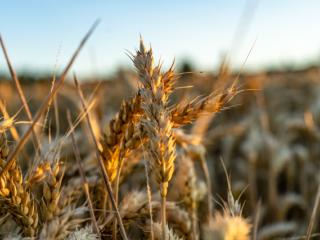Sara Wachter-Boettcher warns that failing to account for the unintended ways technology shapes our lives can cause us pain that might be avoided if we think about how we design digital platforms and apps differently.More
Science and Technology
You know the Apple origin story with the two Steves in the garage. You know the Facebook origin story with Mark Zuckerberg in his dorm. But journalist Claire Evans argues, if you want to tell the internet origin story, you have to talk about women.More
Milwaukee historian John Gurda takes us on a boat ride down the Milwaukee River as we learn how the city nearly lost its river, and what Milwaukee is now doing to preserve it.More
Kamut is arguably the oldest grain in the world. Bob Quinn, who runs the multi-million dollar nonprofit Kamut International, argues that it's an example of what can be right in a very wrong American agricultural world.More
Botanist Robin Wall Kimmerer says there is a reason so many around the world consider corn to be sacred. We give it life, and in return, it gives us life. She says the industrial-scale farming of America has lost control of that balance.More
If a disaster wiped out our ability to grow crops, how would the survivors rebuild civilization? Back in the 1990’s Cary Fowler wondered the same thing. So he created the Svalbard Global Seed Vault – otherwise known as the Doomsday vault.More
With help from Freud, neuropsychologist Mark Solms locates consciousness in choice.More
Jill Heinerth nearly died when she was trapped by ocean currents inside an Antarctic iceberg. She's one of the world's most accomplished underwater cave divers, often exploring caves no one's ever been in, which show her "the veins of the Earth."More
Biologist Carin Bondar has devoted her career to exploring the myriad ways animals mate in the wild, and shared a few of the ingenious ways animals find each other, breed, and rear offspring.More
Futurist Amy Webb tells us we can have a utopian future — if we are vigilant.More
Evolutionary biologists Jeff Schloss and David Sloan Wilson joined Steve Paulson to explore how group selection can explain altruism.More
Can you fall in love with anyone? Maybe, if you ask the right questions.More
Psychologist Lisa Diamond offers a radical new understanding of sexual orientation, arguing that it’s much more fluid than previously believed.More
Even facing the bleakest outcomes that climate change might inflict on our planet, we have to have faith in a new future. That’s something writer Anne Lamott has been struggling with too.More
How neuroscientist Tali Sharot accidentally stumbled on what’s known as “the optimism bias” — our hard-wired belief that our future will be better than our past or present.More
Throughout history, we've been surrounded by substances that seemed benign and innocent in our food, in our gardens, in our medicine cabinets — until we realized they could be slowly killing us.More
The COVID-19 pandemic was some epidemiologist’s nightmare when Adam Kucharski was writing "Rules of Contagion." The book draws on ideas from “outbreak science” to illuminate how and why viruses spread.More
Married couple Ilan Kedan and Christina Lombardi work at Cedars-Sinai Hospital in Los Angeles, and they each decided to participate in two separate medical trials for COVID-19 vaccines.More

















